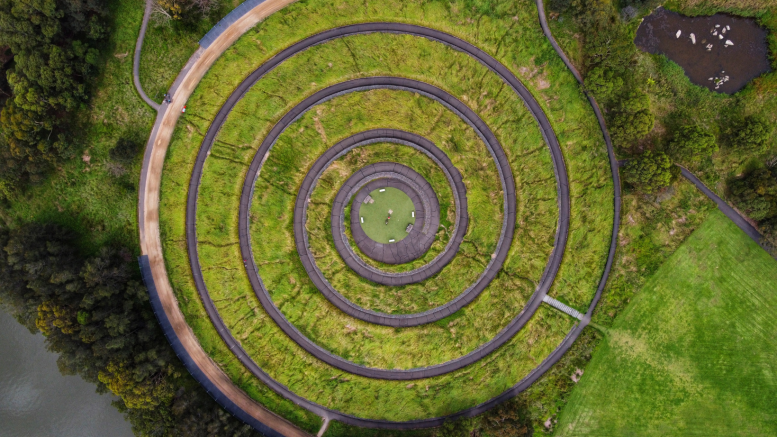What if I told you that waste…
isn’t natural?
In nature, there is no landfill.
No garbage trucks.
No “away.”
Every leaf, every drop, every organism becomes food for something else.
The only place where waste exists…
is in human-designed systems.
Today on Mobilized News, we’re flipping the script on what we call “trash,”
and exploring how cities and communities can design out waste entirely —
through circular thinking, community innovations, and systems designed like nature.
The Problem: Waste Is a Design Choice
Our current system is linear:
Take → Make → Use → Throw away.
That design creates:
- Overflowing landfills
- Microplastics in oceans
- Food waste methane emissions
- Toxic incinerators in low-income communities
- High costs for cities
- Environmental injustice
- Lost materials that could have been resources
We don’t have a waste problem —
we have a design problem.
The good news?
Communities are redesigning the system from the bottom up.
The Flip — Circularity: Waste-Free by Design
Circularity asks one simple question:
“What if waste didn’t exist?”
That means:
- Designing products that last
- Reusing materials indefinitely
- Sharing instead of owning
- Repairing instead of replacing
- Turning organic waste into soil
- Powering communities with local material loops
Circular systems mimic nature —
and nature doesn’t waste anything.
Let’s look at real examples.
Real Examples — Communities Designing Out Waste
Kamikatsu, Japan — Zero-Waste Town
This small village eliminated over 80% of its waste by:
- Sorting materials into 45 recycling categories
- Supporting reuse and repair shops
- Community composting
- No incinerator, no landfill
Their goal: 100% circular living.
Repair Cafés — Global Movement
In thousands of cities, volunteers fix:
- Electronics
- Clothing
- Furniture
- Household tools
Repair cafés turn “broken” into “renewed,”
and rebuild social connection in the process.
Mycelium Packaging — U.S., Europe
Companies like Ecovative and Mushroom Packaging grow shipping materials from mushrooms.
- Fully compostable
- No plastics
- Grows from agricultural waste
The packaging becomes soil.
Dakar’s Waste-to-Fertilizer Program — Senegal
Organic city waste becomes:
- Compost
- Soil enhancers
- Urban agriculture support
Nutrients stay local, farmers gain fertility, waste disappears.
Example 5: Barcelona’s Solidarity Fridges & Reuse Centers
Barcelona operates a citywide circular network:
- Free community fridges
- Second-hand reuse depots
- Zero-waste grocery initiatives
- Circular design innovation labs
City infrastructure supports circular living.
Deposit-Return Refill Systems — Chile & South Africa
Circular bottle and container systems allow families to:
- Refill cleaning products
- Refill beverages
- Reuse jars
- Return containers for credits
Less packaging.
Lower costs.
Zero waste.
U.S. & European “Ugly Produce” Cooperatives
Co-ops rescue imperfect produce and turn it into:
- Meals
- Juices
- Jams
- School lunch ingredients
Reducing food waste while supporting farmers.
Why Circularity Matters
Environmental Protection
Designing out waste reduces:
- Pollution
- Plastic
- Chemical runoff
- Greenhouse gases
Community Resilience
Circular systems:
- Keep materials local
- Reduce dependency on global markets
- Create community-owned infrastructure
Local Economic Power
Circular businesses create:
- Repair jobs
- Upcycling enterprises
- New industries in materials, compost, and reuse
- Local manufacturing opportunities
Social Connection
Sharing, repairing, and co-creating build community trust —
and dismantle the loneliness built into consumer culture.
What Communities Can Do Now
1. Start sharing and repair networks.
Tool libraries, repair cafés, bike co-ops, clothing swaps.
2. Create decentralized composting systems.
Community bins, apartment compost hubs, school composting.
3. Build “circular hubs” that combine recycling, reuse, and maker labs.
Turn municipal waste into local opportunity.
4. Launch refill stations and deposit-return programs.
Local shops can eliminate single-use packaging entirely.
5. Support businesses that upcycle materials.
From textiles to food to plastics.
6. Design policies that eliminate planned obsolescence.
Right-to-repair laws. Extended producer responsibility.
The Big Shift
Waste is not inevitable.
It’s the result of a worldview that assumes resources are disposable
and communities are replaceable.
A circular worldview flips that:
- Materials are valuable
- Communities are powerful
- Systems can regenerate
- Nature is the blueprint
- Nothing is wasted
When cities design out waste, they design in resilience, equity, creativity, and life.
Because the future isn’t built from what we throw away —
it’s built from what we choose to keep, to restore, and to reimagine.
That’s how we flip the script —
from a throwaway world
to a circular world that thrives.
